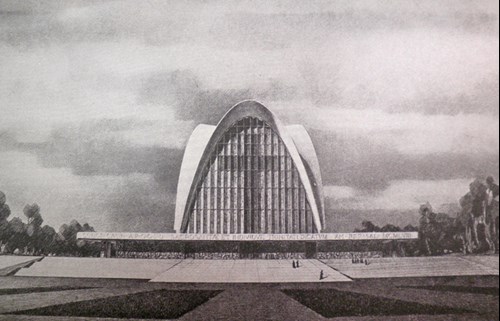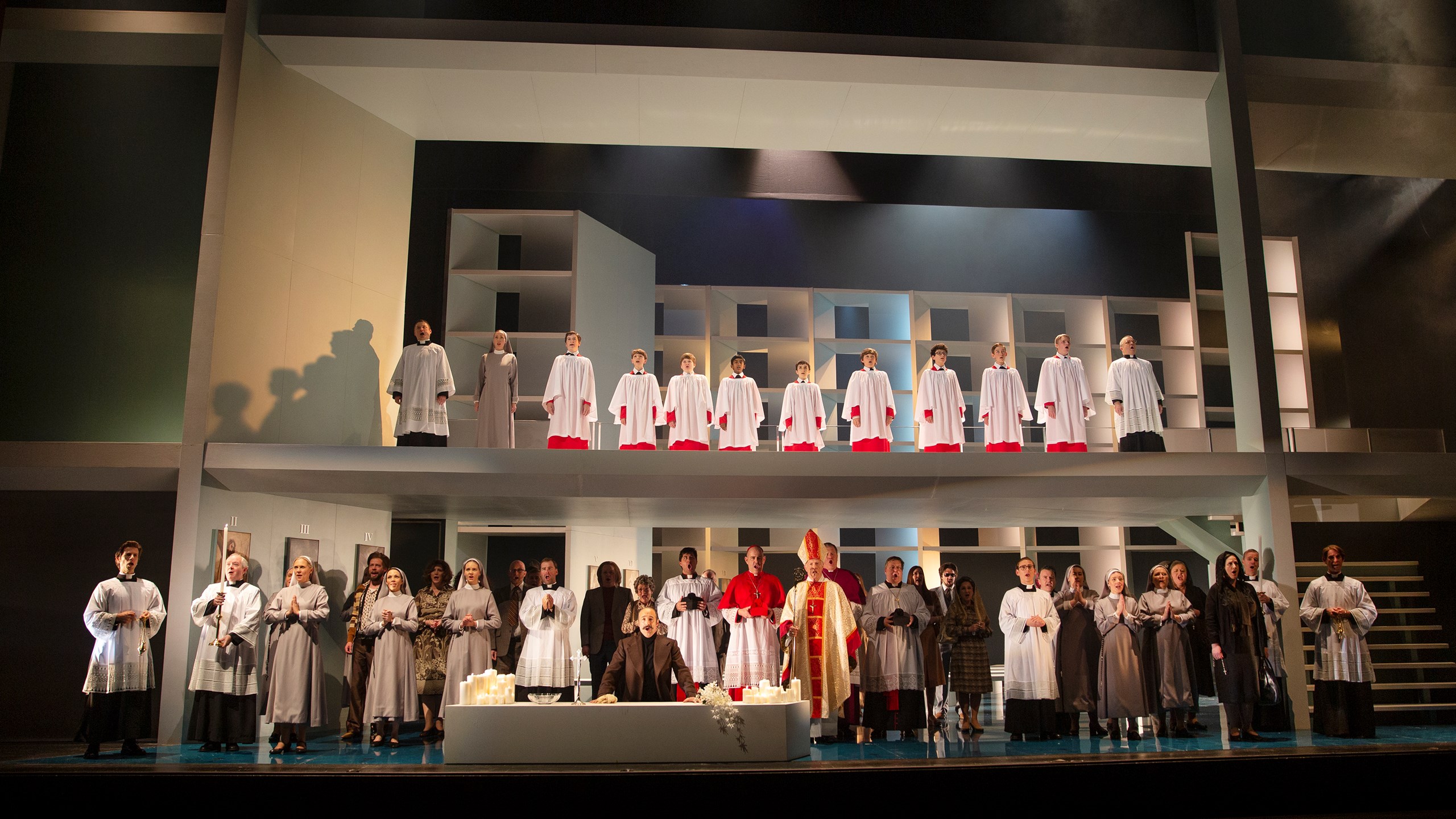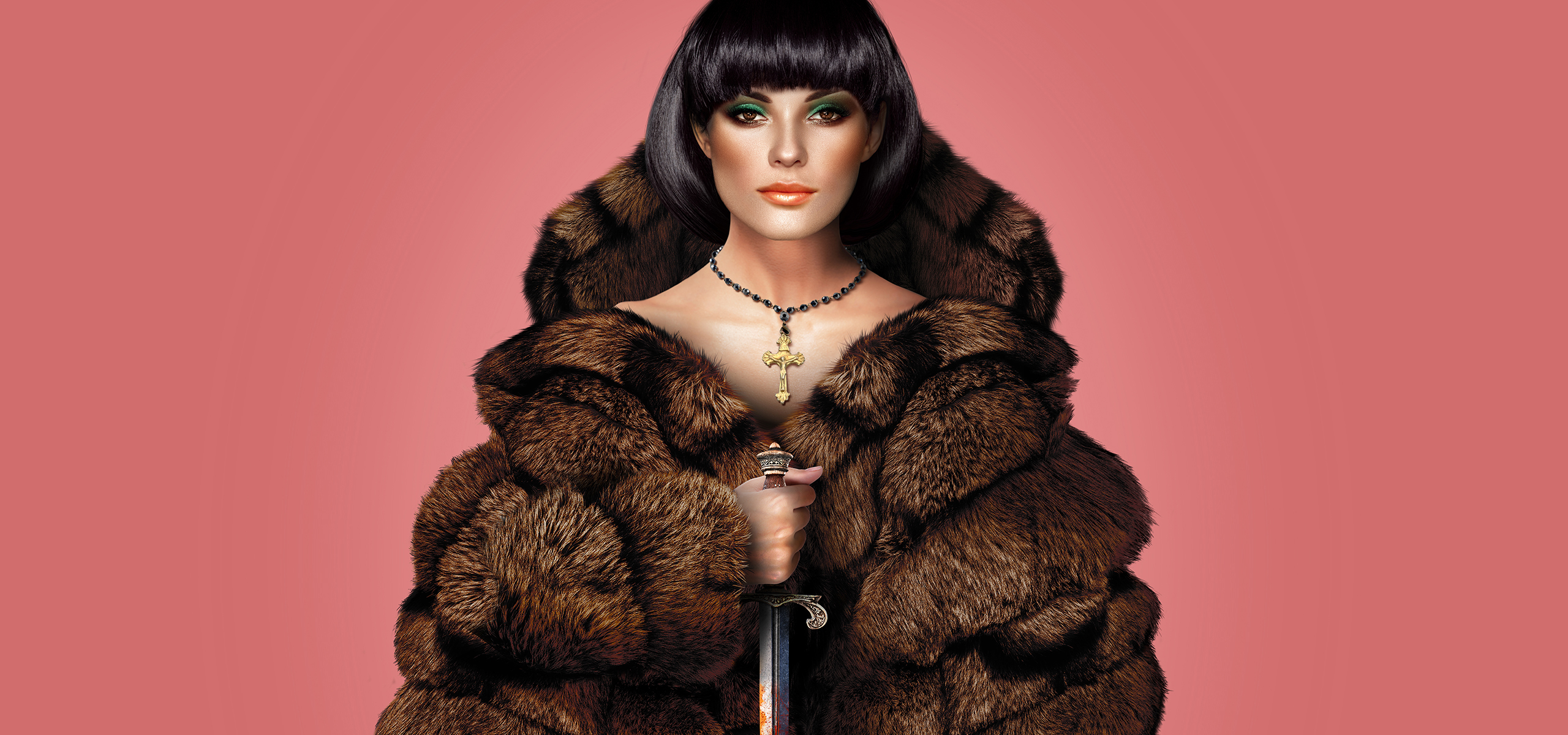Transporting Tosca to Italy’s tumultuous ‘Years of Lead’
From 14 July, West Australian Opera presents Puccini’s masterpiece Tosca on stage, with a shift in time.
The great tragedy of Tosca unfolds in the tumultuous Italian 70s, a decade infamously known as the Year of Lead because of the bullets fired from all fronts.
Political unrest, revolution and religious disparities are the common denominator with the original 1800 setting, bringing Puccini’s masterpiece to contemporary relevance.
The 70s are also the cradle of the Made in Italy brand, technological innovation, and second wave feminism. Here, Tosca’s romance fits flawlessly in the elements of the scene.
In this production new to Perth, premiered by Opera Queensland in 2019, set and costume designer Dale Ferguson’s work brims with detail and references to the Italian architecture and popular icons of the time. We asked him to some of his inspiration for this production.
You’ve noted that you were inspired by Italian architect Pier Luigi Nervi. Is the set inspired by a specific project of Nervi?
The later modernist work of Richard Meir, The Jubilee Church (2000) in the developing suburbs of Rome was an important influence as the I wanted to find a church in Rome that reflected the influences of Nervi. Finding an actual modernist cathedral in Rome was very important to me grounding the design to reality.
The Nervi designed Cathedral of St Mary Assumption in San Francisco was an example of his ecclesiastical work and the unrealized New Norcia Cathedral (pictured below) proposed to be built near Perth was another that inspired the design.

Nervi’s modernist buildings are renown for a solid structure and a bold use of concrete. This is very contrasting from the original baroque church setting. Can you tell us more about this decision?
Linking the Cathedral Architecture with the cell like coldness of 1970’s Brutalist offices was a way of merging the line between church and state. The repetitive cell like rooms of torture and interrogation I wanted to repeat in the shape of the cathedral and let the main set piece and architecture herald the time that we are setting it.
Tosca recalls other Italian divas who lived in the 70s, for example actress Franca Rame, who also witnessed the world of politics, terrorism, and sexual harassment. Is Floria Tosca inspired by a specific diva of that time?
I didn’t specifically research Franca Rame whose lifelong partnership in life and art with Dario Fo was driven by politically inspired passions. I went to the style of Sophia Loren and Jackie Onassis and even Maria Callas even though the latter was 53 when she died in 1977. The actor/models such as Marisa Berenson, Lauren Hutton and Bianca Jagger were also researched for the more youthful feel. I tried to create an economic divide between Tosca and Cavaradossi and link her more to the world of Scarpia in status and style. The costume of Cavaradossi and some other chorus members was derived from the photographs from the actual trials of the Red Brigade.
The 70s were the birth decade of some famous fashion brands, such as Versace and Armani. Have you put any references of the Made in Italy brand in Tosca?
Not any specific brands that you mentioned, but I had collected a number of Italian fashion magazines of the 1970’s period over a number of years and all the major references for both the male and female principles were from these titles. The more suburban daywear for the Act 1 Chorus was derived from watching 1970s Italian Gangster movies available online.
West Australian Opera presents Tosca from 14 – 23 July at His Majesty’s Theatre. Book Now.
Written by Rebecca Bencivenni


